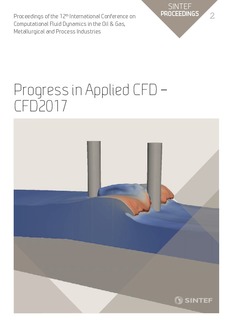| dc.contributor.author | Tabib, Mandar | |
| dc.contributor.author | Rasheed, Adil | |
| dc.contributor.author | Fonn, Eivind | |
| dc.date.accessioned | 2018-02-02T07:11:30Z | |
| dc.date.available | 2018-02-02T07:11:30Z | |
| dc.date.created | 2017-10-27T13:13:13Z | |
| dc.date.issued | 2017 | |
| dc.identifier.citation | Progress in Applied CFD – CFD2017 Selected papers from 12th International Conference on Computational Fluid Dynamics in the Oil & Gas, Metallurgical and Process Industries, 2017 | nb_NO |
| dc.identifier.isbn | 978-82-536-1544-8 | |
| dc.identifier.uri | http://hdl.handle.net/11250/2482278 | |
| dc.description.abstract | Cardiovascular diseases, like Carotid Artery Disease and Coronary Artery Disease (CAD) are associated with the narrowing of artery due to build-up of fatty substances and cholesterol deposits (called plaque). Carotid Artery Disease increases the chances of brain stroke. Hence, the main objective of this work is to apply computational tools to help differentiate between the healthy and unhealthy artery (with 25% stenosis) using a combination of Computational Fluid Dynamics (CFD) and data mining tools. In this work, first, the CFD has been qualitatively shown to provide similar results as the experimental Phase-Contrast Magnetic Resonance Imaging (PCMRI) technique. The CFD simulation shows that wall shear stress is an ideal parameter to identify the location of plaque formation and the existence of plaque conditions in the body (due to overall higher spatially averaged wall shear stress in the clogged case at all times in the cycle). Then data mining tools like Fast Fourier Transform (FFT) and Proper Orthogonal Decomposition (POD) have been used to unearth a pattern that can be useful for diagnosis. FFT shows that the flow constriction induced by plaque leads to lesser variation in magnitudes of energy of dominant frequencies at different locations like, wake region, mid-Internal Carotid Artery (mid-ICA) and mid-Common Carotid Artery (mid-CCA) regions, while for cleaner artery, there is more variation in the magnitude of energy of these dominant frequencies when measured at wake, mid ICA and mid CCA region. POD helps by confirming the location of regions with high energy in decomposed velocity modes for both the cases. More studies are required to develop a data mining based modern 21st century cardio-vascular patient care. | nb_NO |
| dc.language.iso | eng | nb_NO |
| dc.relation.ispartof | Progress in Applied CFD – CFD2017 Selected papers from 12th International Conference on Computational Fluid Dynamics in the Oil & Gas, Metallurgical and Process Industries | |
| dc.title | A COMPUTATIONAL FRAMEWORK INVOLVING CFD AND DATA MINING TOOLS FOR ANALYZING DISEASE IN CAROTID ARTERY BIFURCATION | nb_NO |
| dc.type | Chapter | nb_NO |
| dc.description.version | publishedVersion | nb_NO |
| dc.source.pagenumber | 125-132 | nb_NO |
| dc.identifier.cristin | 1508337 | |
| cristin.unitcode | 7401,90,11,0 | |
| cristin.unitname | Anvendt matematikk | |
| cristin.ispublished | true | |
| cristin.fulltext | original | |
